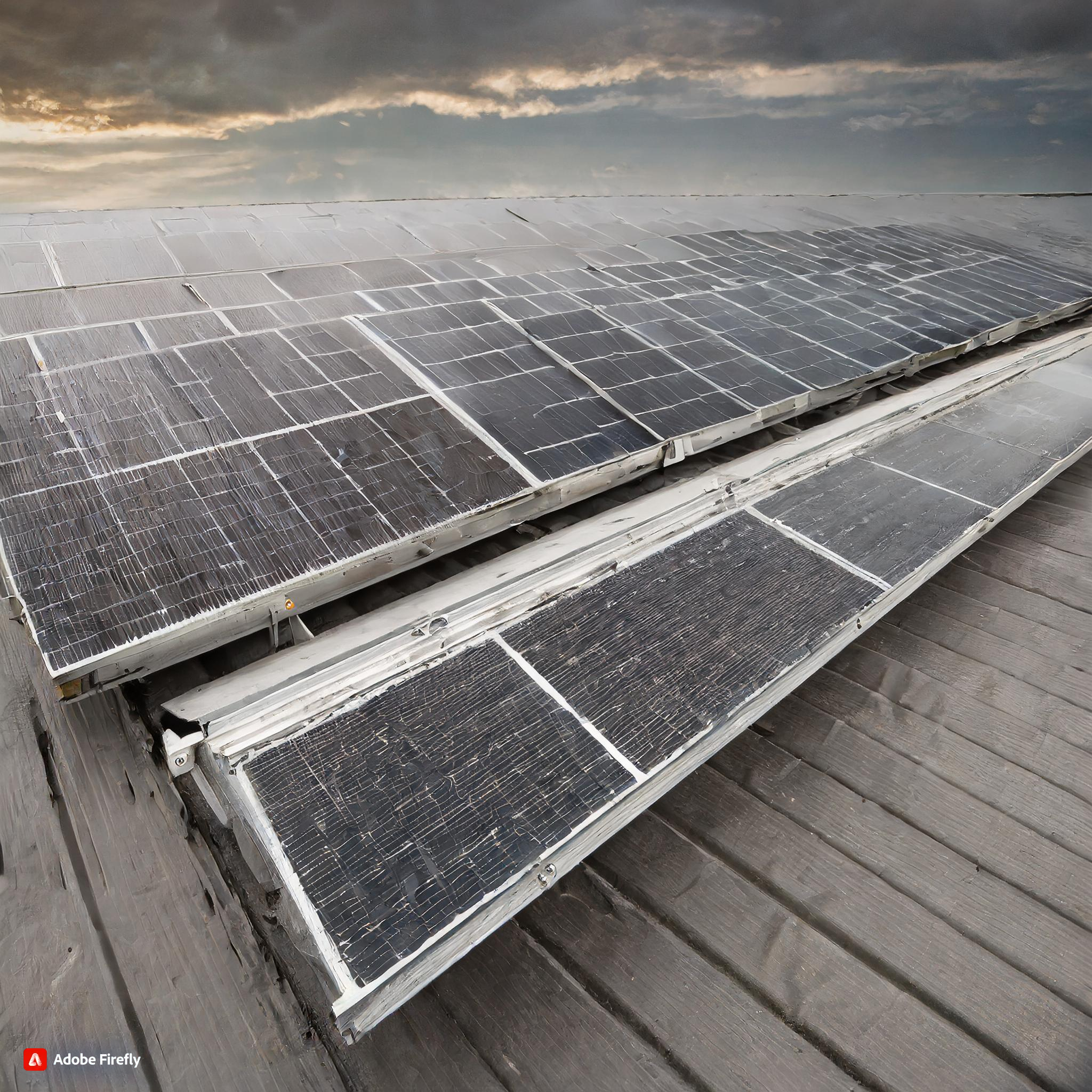Carbon Footprints: Role of Solar Panels
 Healthy Solar
Healthy Solar
Introduction
In the face of climate change and environmental degradation, reducing carbon footprints has become a crucial goal for individuals, businesses, and governments. Carbon footprint refers to the total amount of greenhouse gases (GHGs) generated by our actions, measured in equivalent tons of carbon dioxide (CO2). One effective way to lower this footprint is by transitioning to renewable energy sources, with solar power being a prominent option. This blog explores the concept of carbon footprints, their impact, and how installing solar panels can significantly reduce them.
Understanding Carbon Footprints
What is a Carbon Footprint?
A carbon footprint encompasses all the GHG emissions produced directly and indirectly by human activities. These emissions come from various sources, including transportation, electricity consumption, food production, and industrial processes. Carbon footprints are typically measured in tons of CO2 equivalents (CO2e), accounting for the different warming effects of various GHGs such as methane (CH4) and nitrous oxide (N2O).
Sources of Carbon Emissions
Transportation: Vehicles powered by fossil fuels are major contributors to CO2 emissions. This includes cars, trucks, airplanes, and ships.
Electricity and Heating: Power plants burning coal, oil, and natural gas release significant amounts of CO2. Residential and commercial heating systems also contribute.
Industry: Manufacturing processes, chemical production, and other industrial activities emit substantial GHGs.
Agriculture: Farming practices, livestock, and deforestation release methane and CO2.
Waste: Decomposing waste in landfills produces methane, a potent GHG.
The Impact of Carbon Footprints
Climate Change
The accumulation of GHGs in the atmosphere leads to global warming and climate change. This results in rising temperatures, melting ice caps, and more frequent extreme weather events such as hurricanes, droughts, and floods. The ecological balance is disrupted, affecting wildlife and human populations alike.
Environmental Degradation
Carbon emissions contribute to air pollution, acid rain, and ocean acidification. These changes harm ecosystems, reduce biodiversity, and threaten food and water supplies. Forests, which act as carbon sinks, are also affected, reducing their ability to absorb CO2 from the atmosphere.
Health Effects
Air pollution from burning fossil fuels is linked to respiratory and cardiovascular diseases. Populations in urban areas are particularly vulnerable to health issues caused by poor air quality, leading to increased medical costs and reduced life expectancy.
Solar Panels: A Sustainable Solution
How Solar Panels Work
Solar panels, or photovoltaic (PV) panels, convert sunlight into electricity. They consist of semiconductor materials, typically silicon, that generate electric current when exposed to sunlight. This process, known as the photovoltaic effect, allows for the direct conversion of solar energy into usable electricity.
Benefits of Solar Panels
Renewable Energy Source: Solar power is an abundant and inexhaustible resource, unlike fossil fuels which are finite.
Zero Emissions: Solar panels produce electricity without emitting GHGs during operation, making them a clean energy source.
Reduces Dependency on Fossil Fuels: By generating electricity from solar power, the demand for fossil fuels decreases, leading to lower carbon emissions.
Energy Independence: Solar panels provide energy security by reducing reliance on imported fuels and stabilizing energy prices.
Cost Savings: Although the initial investment can be high, solar panels can significantly reduce electricity bills over time and offer a return on investment.
Installing Solar Panels to Reduce Carbon Footprints
Residential Installations
Homeowners can significantly reduce their carbon footprints by installing solar panels. A typical residential solar system can offset a considerable portion of a household's electricity consumption, reducing reliance on fossil-fuel-based power plants.
Steps to Install Solar Panels at Home
Assessment: Evaluate the roof's suitability, including its orientation, shading, and structural integrity.
System Design: Choose the appropriate size and type of solar panels based on energy needs and budget.
Permits and Incentives: Obtain necessary permits and explore government incentives, tax credits, and rebates.
Installation: Hire a certified installer to mount and connect the panels to the electrical system.
Monitoring and Maintenance: Regularly monitor the system's performance and maintain the panels to ensure efficiency.
Commercial and Industrial Applications
Businesses and industries can also benefit from solar installations, reducing operational costs and enhancing sustainability credentials. Large-scale solar projects can power factories, offices, and retail spaces, contributing to significant carbon reductions.
Benefits for Businesses
Corporate Responsibility: Demonstrates a commitment to sustainability and can enhance brand reputation.
Cost Efficiency: Reduces electricity costs and provides long-term financial savings.
Regulatory Compliance: Helps meet environmental regulations and avoid potential fines.
Green Certifications: Contributes to obtaining green building certifications such as LEED.
Community and Utility-Scale Solar Projects
Community solar projects allow multiple households or businesses to share the benefits of a single solar installation. Utility-scale solar farms can supply clean energy to the grid, serving thousands of homes and significantly cutting down regional carbon emissions.
Challenges and Considerations
Initial Costs
The upfront cost of solar panel installation can be high, but various financing options, incentives, and falling prices are making solar more accessible.
Space Requirements
Adequate space is needed for solar panel installations, which can be a limitation in densely populated urban areas.
Intermittency
Solar power is intermittent, as it depends on sunlight. Energy storage systems like batteries or grid connections are necessary to ensure a reliable power supply.
Conclusion
Reducing carbon footprints is essential for mitigating climate change and protecting the environment. Solar panels offer a viable solution by providing clean, renewable energy and decreasing dependence on fossil fuels. Despite some challenges, the benefits of solar power in reducing carbon emissions, achieving energy independence, and promoting sustainability make it a valuable investment for the future. By embracing solar technology, individuals, businesses, and communities can contribute to a greener and healthier planet.
Subscribe to my newsletter
Read articles from Healthy Solar directly inside your inbox. Subscribe to the newsletter, and don't miss out.
Written by

Healthy Solar
Healthy Solar
Healthy Solar is a dynamic startup dedicated to advancing the renewable energy sector through innovative solar solutions. Despite being a new entrant, our team brings a fresh perspective and deep expertise in designing and installing efficient solar energy systems for a diverse range of applications. We focus on both commercial and residential markets, aiming to make solar energy accessible and effective for our clients. Our approach emphasizes a commitment to high-quality service and a strong dedication to understanding and meeting the unique needs of each project. At Healthy Solar, we combine modern technology with a proactive approach to anticipate challenges and deliver exceptional results. Our goal is to provide sustainable, reliable solar solutions that drive positive environmental impact and offer long-term value to our clients.